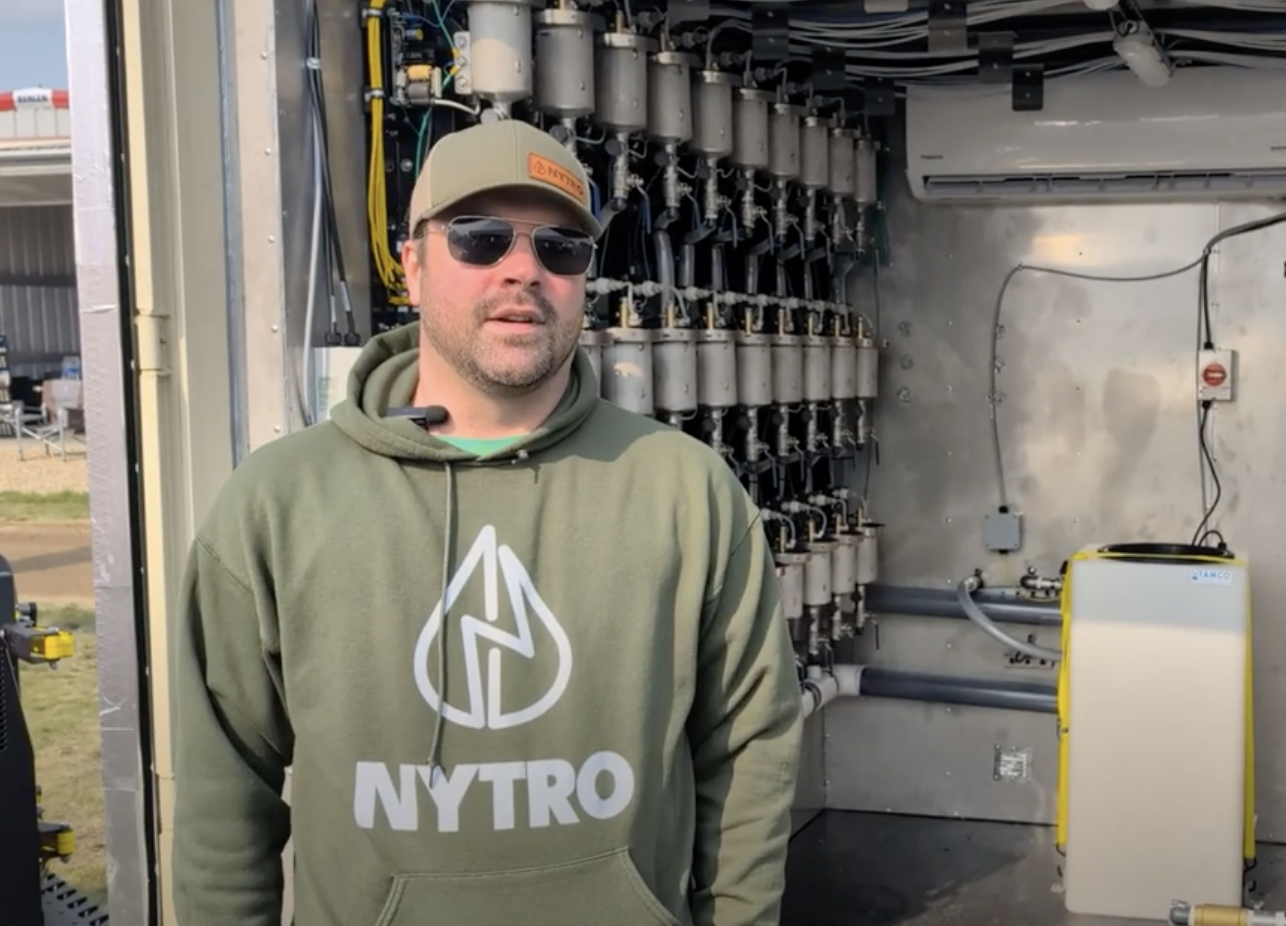A three-year study on forage and pasture land near La Broquerie, Man., found there are more advantages than disadvantages to using hog manure as fertilizer.
Beginning in 2004, a team of researchers from the University of Manitoba led by Kim Ominski from the department of animal science looked at the effect on forage yield and quality, animal performance and soil and water quality from the application of hog manure on a 160 acre site owned by Hytek Ltd.
The results on the predominantly native grass pasture, which had never been fertilized, showed a three-fold increase in forage growth compared to the control plots that received no manure.
Read Also

VIDEO: Green Lightning and Nytro Ag win sustainability innovation award
Nytro Ag Corp and Green Lightning recieved an innovation award at Ag in Motion 2025 for the Green Lightning Nitrogen Machine, which converts atmospheric nitrogen into a plant-usable form.
That amounted to $84 to $92 per acre in increased harvested forage yield and $175 to $191 per acre in improved weight gains for the cattle grazing the land, said Derek Brewin, of the U of M’s agribusiness department.
“It really looks like a win-win deal, both for the person who gets the manure and the hog farmer. It has some real value,” said Brewin.
“There’s a big payoff in putting hog manure on nutrient-depleted forages. If you can get a free source, why not use it?”
While the value of the nitrogen component of the manure applied at a rate equivalent to 110 pounds per year was just $40 per acre, the value of the phosphorus, potassium, sulfur and other nutrients was not calculated. Brewin said even though it is hard to put an exact dollar on the extras, they can’t be ignored.
“The soil guys were telling us that we were seeing an incredible increase in root mass and soil health,” he said.
Ominski said the land chosen for the study had been seeded to tame forages, but was currently producing mainly native grasses.
“It had a fair capacity to improve in productivity as a consequence of it being pretty nutrient deficient,” she said.
The hog manure, mainly solids from a nearby barn owned by Hytek, was surface applied by a splash plate-equipped tanker truck.
Perhaps the most interesting result of the study, given the controversy about the alleged nutrient link between Manitoba’s hog industry and algae blooms on Lake Winnipeg, was that the phosphorus seemed to stay on the surface.
“After three years of manure application, we’ve seen a phosphorus increase in the root zone of the plants, but we’ve not seen it move any farther than that, at least to date. And we haven’t seen it move as far as into the ground water.”
However, Ominski added that it is still too early to tell whether the phosphorus, once it reaches the saturation point at the surface, might leach down with continued manure application.
To gain more information on this possibility, and other issues, the study is to be continued for another three years.
With regard to pathogens, salmonella and E. coli were found in the hog manure but were not transferred to the cattle, said Denis Krause, a microbiologist with the U of M’s animal science department.
E. coli and antibiotic-resistant organisms were found in samples taken from 12 wells that were drilled on the land, but researchers were not able to determine their origin through DNA fingerprinting. More samples were needed, he said.
“They could have come from somewhere else,” said Krause, who added that antibiotic-resistant microorganisms are commonly found in unexpected places, even in remote lakes in northern Manitoba.
“They could have come from wild animals, or from an adjacent landholder, or a bear, or a whole number of places.”
Even though the water table on the site was only 1.2 metres below ground level in some places, the study’s results showed that using hog manure on forages is not likely to pollute the ground water, at least over the short term, he said.
“You haven’t got a situation where there is an incredible number of organisms moving from the hog manure into the ground water,” he said, adding that it still would be wise to monitor the practice in sensitive areas.
“My best estimate is that it is happening, but it’s not like a four-lane highway going down there.”
Mario Tenuta, a professor with the U of M’s department of soil science, said that since the manure was applied to the surface and not injected or coultered in, it was not surprising to find that the phosphorus was retained in the root mat.
“Phosphorus likes to bind to the soil and that was exactly what it did,” he said, adding that growth in volume of the root mat was 30 percent more.
“We measured after three years, but it could have happened after one year. There’s a wonderful relationship between above ground biomass growth in perennial forages and underground root expansion. If you increase one, the other increases, too.”
The rejuvenated forage stand could be expected to retain water and nutrients more efficiently due to the thicker root mat, he said, adding that although further study is needed, the rate of carbon sequestration as a result could be substantial.
“It’s actually quite phenomenal, the amount of root material that we’ve produced. We’re going to dive into that in more detail this year.”














